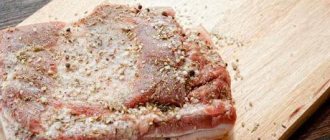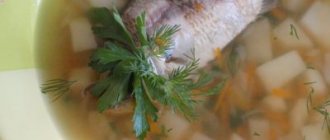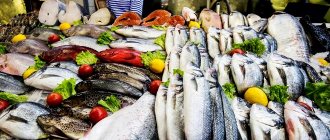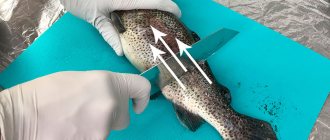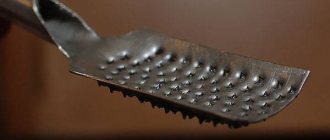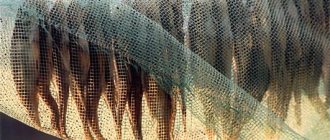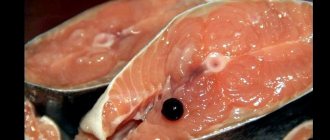- October 23, 2018
- Cooking
- Michael
Probably every connoisseur of dried fish is familiar with chebak. This is a subspecies of the well-known roach, and only an expert can tell the differences between them. It is important that they taste very similar - dried chebak is simply gorgeous: moderately tender, fatty and tasty. Unfortunately, it is not always possible to purchase quality fish in stores. And when you manage to find it, the price can scare off many people with an average salary. However, knowing how to pickle chebak, even a person who has never done such work can easily cope with such a task. We'll tell you about the whole process so that everyone can enjoy dried fish and please their loved ones.
Choosing the right fish
The success of the event largely depends on how good the fish can be used. Of course, fresh, recently caught chebak that has not been frozen is best. But not all people are keen on fishing, so as a last resort, you can take frozen fish from the store. The fresher the better. What is especially important is that it should not be double-frozen - in this case, the structure of the fillet will be damaged, and this will affect the taste of the finished product.
It is best to pickle medium-sized chebaks - 18-22 centimeters. This type of fish is optimal. If you take smaller ones, then there will be not enough pulp in the finished dried fish. In addition, it dries out quickly and becomes very hard. But too large a fish is not suitable either. In order for the back and tummy to be well salted, you need to keep it in salt for a long time. During this time, the tail will have time to over-salt.
Of course, if you are dealing with frozen fish, you should let it thaw. Leave it in the refrigerator for a day or overnight on the table in a suitable container so that the melt water does not leak.
Drying stages
Let's start drying fish: salting recipes
Dry
The fish (usually large ones) are placed in a wooden or plastic box covered with cloth in layers, belly up. You can also use a basket or even a clean bag (jute or plastic). It is important that the container has holes through which the juice released from the fish will flow out. The raw materials are sprinkled with salt on all sides (the heads need to be treated especially carefully). For 10 kg of fish take at least 1.5 kg of salt. Cover the container with a flat lid, put pressure (for example, a three- or five-liter jar of water) and put it in a cool place. Salting usually takes from 5 to 10 days.
Tuzluchny
The fish, tightly placed in a basin or pan with their tummies up, is sprinkled with salt in layers (1 kg per 10 kg of raw material) and pressed under pressure. In this case, the brine (brine) that is released from the fish remains in the container. After 1-2 days it rises above the raw material. After this, the container is left in a cool place until the fish is salted, that is, at least another day for small ones and a week for large specimens.
Wet
The fish, prepared and placed in a container, is poured with a cold solution prepared from coarse salt and water (about 350 g per 1 liter). The suitability of the brine can be checked: a fresh egg immersed in liquid should remain on the surface. Small fish are kept in a salt solution for 2-3 days, and large fish for about a week. After the product is removed from the brine, it must lie in the air for 1-2 hours so that the salt is evenly distributed throughout the tissues.
"Spring"
As a variant of wet salting, the so-called hanging salting is used. In this case, small fish are strung on rods, a cord or fishing line through the eye holes and lowered into the brine so that they do not press on each other. In medium-sized (non-gutted) specimens, the abdominal cavity is filled in advance with a strong salt solution, pumping it through the mouth opening using a syringe so that the flesh is salted out more reliably and evenly.
In addition, there are varieties of dry and brine salting , in which sugar, dill or spices (ground pepper, bay leaf, coriander and even cinnamon) are added to the salt with which the fish is sprinkled. If you dry fish processed in these ways, you will get products that are distinguished by a particularly refined, “spicy” or “balyk” taste.
The readiness of the fish for the next stage is determined as follows: the carcass is taken by the head and tail and stretched in the longitudinal direction. In a well-salted fish, the spine “crunches”, producing a specific sound. You can press your finger on the back of the fish: if salted correctly, there will be a hole left on it.
Soaking the fish
Before you dry the fish, you need to soak it. This is done in order to remove salt from the subcutaneous layer of pulp. If you skip this step, your skin will not dry properly. In this case, the surface of the finished product will become damp, and the fish simply cannot be stored.
The easiest way is to soak the raw materials under the tap, while simultaneously washing it from any remaining mucus. The washed fish are placed in a bowl of cold water. If they do not sink, it means that the pulp already contains the optimal amount of salt for drying. The total period of washing and soaking should not exceed 1 hour for every day of preliminary salting. Large, fatty fish should not be kept in water continuously for 7-10 hours, so as not to reduce the taste of the final product. Every 2-3 hours it is taken out and kept in the air for some time, and then soaking continues.
We bring to your attention a video in which a fisherman talks about how he soaks fish.
Drying (at what temperature to dry fish)
The fermentation that fish tissue undergoes during drying occurs in the absence of heat treatment. That is why the final stage (drying of salted raw materials) should take place at a temperature no higher than 18-20 ℃ and constant ventilation. It is best to do this in spring or autumn. In this case, the fish does not overheat in the sun.
To protect against flies that can spoil the product, a variety of means are used: the fish is covered with gauze, sprayed with vinegar, sometimes even coated with a mixture of vinegar and vegetable oil. Experienced fishermen hang out their catch to dry in the evening. At this time, there are almost no flies, and during the night the surface layer of the raw material hardens, and insects can no longer damage it.
You can dry fish in winter. Connoisseurs appreciate the product obtained by freezing moisture. At temperatures close to 0 ℃, fish takes a long time to dry, and its taste differs from that typical for spring, summer and autumn catch.
Which container is best for salting?
A glass container is best suited for this purpose. Glass does not react, does not give off an unpleasant odor, and certainly will not emit harmful substances. However, not everyone has a glass saucepan or other container of a suitable size on hand. Therefore, you can use an enamel basin, bucket, pan. The main thing is to make sure that there are no chips in the enamel: after contact with salt, the metal begins to rust quite actively, which will lead to damage to the container. You may have to throw it away later.
But it is undesirable to use plastic. Some containers, when salted for a long time, can give off a characteristic odor that will spoil the taste of the finished fish.
Salting process
Now let’s move on directly to how to pickle chebak at home. In general, this does not require anything supernatural - just the fish itself and salt. It is advisable to choose the simplest salt - coarse, pickling salt, without iodine and other additives. It is undesirable to use small, “extra” varieties - because of it, the fish is often over-salted.
For a kilogram of fish you need to take about 100 grams of salt - based on this, calculate the optimal amount of food.
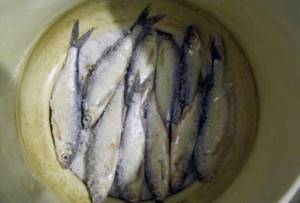
The process itself is very simple - any child, not to mention an adult, can easily figure out how to salt chebak.
First you need to pour salt into the container - in a fairly thin layer, but evenly. The fish are laid out on top of it - tightly, one to the other. Salt is poured on top of it again and again a layer of fish. And so on until both ends.
If you took small or medium-sized fish, then you should place it whole. But if you only have a large chebak at your disposal, you will have to tinker a little longer - rip open the belly (no need to clean, remove the head and gills) and pour a pinch of salt inside, distributing it along the walls. The downside of this option is the lack of caviar, which many connoisseurs love. In addition, cut fish will dry out faster. It is enough not to keep track of literally half a day, and it will resemble a piece of wood in hardness.
After this, a suitable disk is placed on the fish - preferably a wooden one, but a pan lid will also work. All that remains is to place a small (2-3 kilograms) stone or other weight. A three-liter jar of water will do.
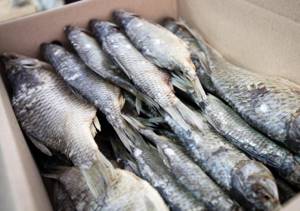
Now the fish needs to be left for 2 days in a cool place. After this time, the fish is removed from the container. It will produce a copious brine, which will then need to be drained. Well, the chebaks are washed under cold running water and hung - we’ll tell you more about this procedure a little later.
You can see for yourself that the question of how to properly pickle chebak is not difficult to figure out.
How to dry fish at home
Hello dear readers of the site. It's hard to find a person who doesn't like dried fish . Properly salted and dried, it acquires that unique aroma and taste that simply cannot be expressed in words.
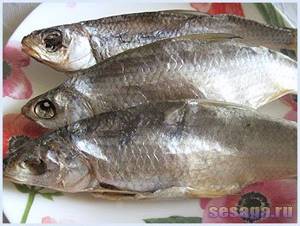
Autumn
and
spring
is the best time for drying fish. In the fall, the fish gain fat for the winter, and in the spring, they still do not have time to fully consume it. And the ambient temperature at this time of year is the most favorable.
For drying or drying, mainly agulet varieties of fish are used: roach, rudd (autumn), ram, glanders, saberfish, tarashka, silver bream, white bream, bream, perch.
If you look at it, drying
and
drying
are the same process, they just call it differently: drying is in industry, and drying is popular. When drying and drying, the fish is first salted and then dried in the open air or in a dry, well-ventilated area.
So, let's get started. We will dry (dry) roach and tarashka. Only fresh fish, caught independently or purchased from a fishing farm or store, is suitable for drying (drying).
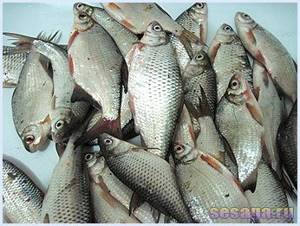
You can use fish that is about a day old, but in this case the quality of salting and subsequent drying will depend on the temperature at which the fish was stored. There is a possibility that it will not have time to salt properly and may end up with a “smell.” Therefore, it is better not to take risks.
Before you start salting, wash off river debris, dirt, and, if possible, mucus from the fish. I usually wash each fish by hand.
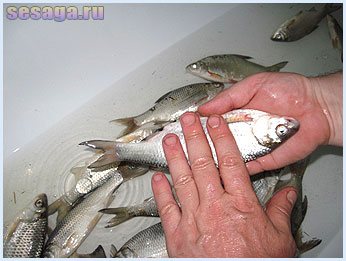
Any container for pickling is suitable: enameled, aluminum, stainless steel. You can use an ordinary plastic bucket or basin. But keep in mind that with frequent use, the fishy smell from plastic does not dissipate well.
When salting, the fish is laid in layers and each layer is sprinkled with salt. Sprinkle a small layer of salt on the bottom and place the fish in one row. Try to place the larger fish first.
Usually a dozen or a dozen of the largest roach are selected for frying. Fried roach with potatoes turns out very tasty.
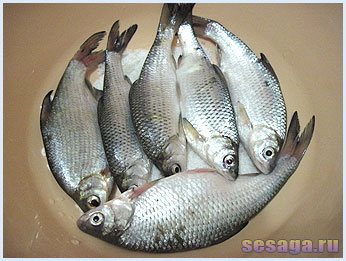
Now sprinkle this layer with salt.
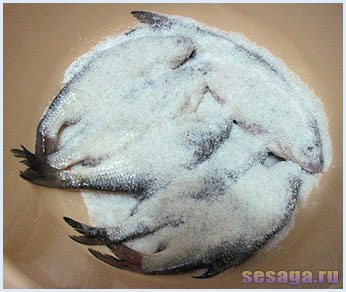
Place the next layer of fish on top and also sprinkle with salt.
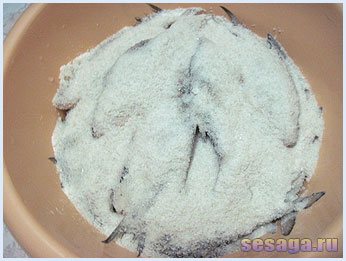
When finished, it is advisable to put the dishes with fish in a cool place: this could be a loggia, balcony, cellar, etc.
The next day the fish will give “juice”, brine or brine. Since it is called differently in different regions, I have listed all the known names here.

We put pressure on top to drown the fish in the resulting brine and prevent the air formed inside the abdomen from accumulating. Under the pressure of the load, air will be squeezed out.
Stones or bricks wrapped in plastic bags are usually used as oppression. If there is no stone, you can use a five-liter jar filled with water. We leave the oppression for two days.
After three days, we check the fish for the degree of salinity. Well-salted fish have hard
, and the back
is sunken
. And if you take the fish by the head and lightly pull the tail, you can hear and feel the crunching of the vertebrae.
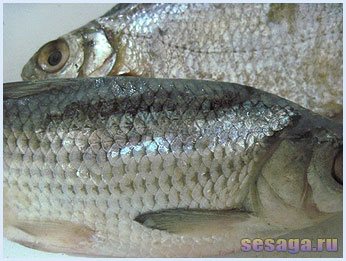
If, in your opinion, the fish has not yet been salted enough, that is, it does not have such signs, then we leave it to salt for another day.
While the fish is salting, it is necessary to make pieces of wire 40 - 50 centimeters long. We will string fish on them for drying. A regular installation copper or aluminum wire in vinyl chloride insulation will do.
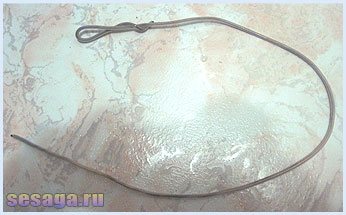
After the salting time has passed, the fish must be washed from salt and soaked. They soak the fish like this: if it has been salted for three days, it means that it is kept in water for four hours, that is, one hour more.
Fill a large bowl or bathtub with cold water and pour the fish into it. The one that floats up means that it has not been salted well, and it must be dried separately from all the others. As a rule, for some reason, a few pieces definitely don’t get salted out.

Now an important process on which depends how dried fish will subsequently look, that is, its appearance
and
taste
. If you skip this process, then consider that your work and time were wasted.
It is necessary to wash off the mucus and salt from the body of each fish.
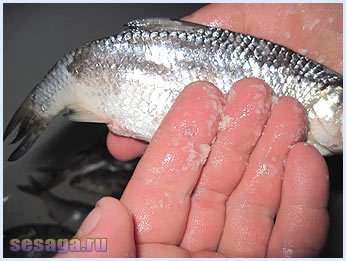
Mucus and salt are washed off with your hands, a cloth or sponge. While performing this procedure, be careful not to overdo it and rub off the scales. I wash it off with my hands.
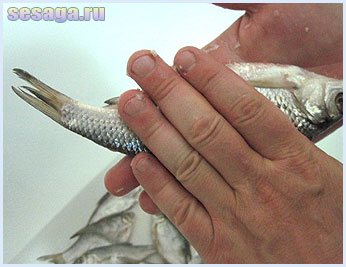
The soaking time for fish is taken into account from the moment it is placed in water to remove salt and mucus..
Now we string the fish on a wire to make the kind of fish hooks like in the photo below. Carcasses of the same size are strung on each wire, and the number of carcasses in a chain can vary from 6 to 14 pieces - it all depends on the size.
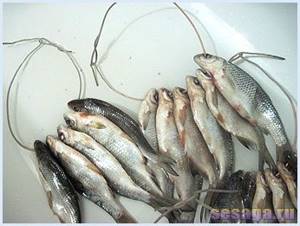
When the fish are ready, change the water and leave the fish to soak until the end of the remaining time.
It is recommended to hang fish in the evening when there is no fly. During the night it has time to become weathered, and the fly will no longer be so scary.
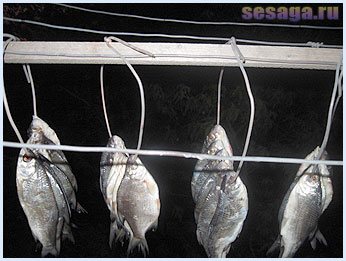
Also, to protect against flies, they make special frames and cover them with gauze or nylon mesh, and the fish are placed inside.
Drying time depends on weather conditions and the size of the fish itself. Starting around the fifth day, check the fish every day for doneness. Try not to overdry it, let it be slightly underdried, and to determine the degree of readiness, taste the fish. If the meat is damp, leave it to dry for another day.
The fish is stored in a cool place, wrapped in paper or a paper bag. For these purposes, use a refrigerator, cellar or other cool place. Who has what capabilities?
And according to established tradition, I suggest you watch the video.
Now I think that it will not be difficult for you to dry or dry fish yourself at home . Good luck!
Do you need seasoning?
However, not all gourmets are satisfied with such a simple method of preparing dried chebak. Some people think that it makes sense to give it a brighter and richer bouquet. To do this, in addition to salt, you will have to use other spices. In general, the choice is simply huge - in any store you can find dozens of seasonings, ranging from red and black pepper to cardamom and ginger. You can use almost anything, depending on your taste preferences.
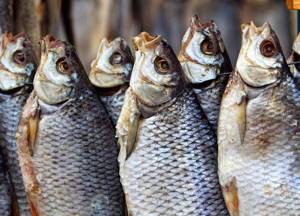
As an example, here is one of the classic recipes for preparing spicy, hot dried chebak. For one kilogram of fish, in addition to salt, take:
- 1 tablespoon sugar.
- A small pod of hot pepper.
- 4 bay leaves.
- 20 black peppercorns.
- 6 carnations.
Crush all this in a mortar or, if possible, in a blender. Add the resulting mixture to the measured salt and proceed to salting, the procedure for which is described in detail above. No changes need to be made to the process.
Hanging out the fish
It is best to hang the chebak to dry outside - on the balcony or somewhere under a canopy if you are pickling in a country house or in a private house.
To do this, it is worth stretching a cord or wire of a suitable length - this is where the fish will be hung out to dry.
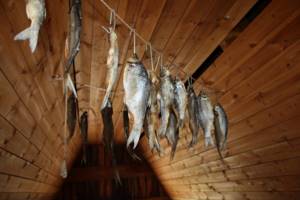
The next stage is preparing the hooks. The best material for this would be ordinary aluminum wire. It can be curved into the shape of a capital letter "G" or a capital letter "W" with an elongated middle. The first option is suitable if there are not very many fish - one chebak is attached to one such hook. If there are quite a lot of fish and you have to save space, then the second option is a good solution - you can put two fish on one such hook at once. The downside is poorer ventilation, especially if the fish is hung in several rows.
Proper planting is also not the least important thing. After all, it’s not enough to know how to pickle chebak deliciously. You also need to have an idea about proper drying. You need to hook the fish with your eye, threading it through the skull. Do not stand through the tail - in this case, moisture will flow down into the head. And it takes the longest to dry anyway. As a result, the tail will already dry out, and the belly will remain raw. When hung tail down, the moisture is distributed more evenly and you get a better quality product.
Methods for salting fish
There are two main ways of salting fish for drying - “wet” and “dry” salting. Both methods make it possible to get equally tasty dried fish.
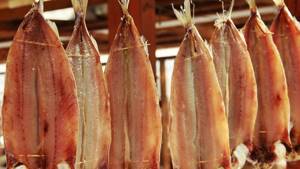
Dry salting is more often used for preparing large fish, and salting in brine is used for small and medium-sized fish. Another feature of salting fish in brine is that the meat of the finished fish is more tender.
For dry salting, you will need a container with holes or slits through which the juice released from the fish will drain (a wooden box, a plastic container with holes).
For salting fish in brine, any container with a salt-resistant coating (plastic, enamel dishes) is suitable. Aluminum containers for salting fish are not suitable, as their surface will oxidize and release impurities harmful to health.
Delicious recipe! How to stew cabbage with minced meat in a cauldron
Any salting method consists of the following steps:
- Preparing fish for salting;
- Salting fish;
- Preparing fish for drying, soaking.
Let's look at each stage in more detail.
Protecting fish from flies
In the warm season, protecting fish from flies is extremely important. Winged pests quickly land even on well-salted chebak, lay eggs, and after a few days worms hatch from them.
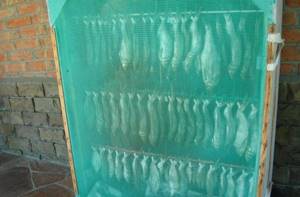
The easiest way to protect your fish is to use old tulle. You should not wrap it around the chebak - this will impair ventilation and slow down drying. It is better to build a small frame that fits the shape and stretch tulle over it. Simple gauze will do.
Well, if possible, you can lightly fumigate the fish with smoke. Having hung the catch in a small room (for example, in a bathhouse), you need to smoke it thoroughly - burn a large amount of wet grass, leaves, raw sawdust in a basin or iron bucket, after closing the door. The fish will acquire a pleasant yellowish tint and aroma, and flies will definitely not approach it.
Buying fish
Not every one of us can boast of the opportunity to catch a chebak with our own hands. Naturally, this does not mean that you should stop using it. Today you can buy almost any fish on the market. Chebak is sold by specialized stores and private fishing enthusiasts.
Unfortunately, neither one nor the other can be trusted in terms of fish freshness.
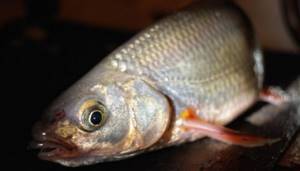
There is no need to talk about the fact that the fish for smoking needs to be selected fresh. Otherwise, there is a high probability of spoilage of the product even at the stage of its preparation.
There are several trivial ways to determine the freshness of river fish. First of all, it is necessary to visually inspect it.
- The roach's eyes should be transparent. The reddish tint of the proteins is the calling card of the species, so it should not confuse the buyer. But the pupils should not be covered with a matte film.
- Mucus on the scales is allowed, but it is not sticky, but transparent, and does not emit foul odors.
- Carefully examine the belly of the fish. If the fish spoils, the bellies are slightly swollen. You can press your finger on the carcass in the ribs or back area. The resulting dimple quickly disappears; these are signs of fresh fish.
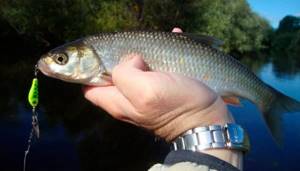
How to store
However, it is not enough to know how to pickle chebak for drying. It is very important to keep it from mold and drying out. If you need to save it for a week or two, you can put it in a plastic bag and put it in the refrigerator. All this time it will retain its original properties, but over time it will dry out.
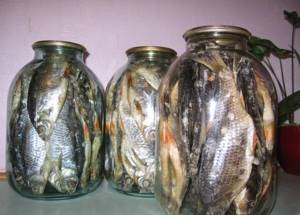
If you are interested in longer shelf life, then the freezer is suitable. Place the fish in a bag (preferably paper) and put it in the freezer. Half a day before eating, take it out and let it thaw in the refrigerator, without the bag. Yes, the taste will be slightly worse than that of recently dried. But you can store fish this way for a month, or even two.
